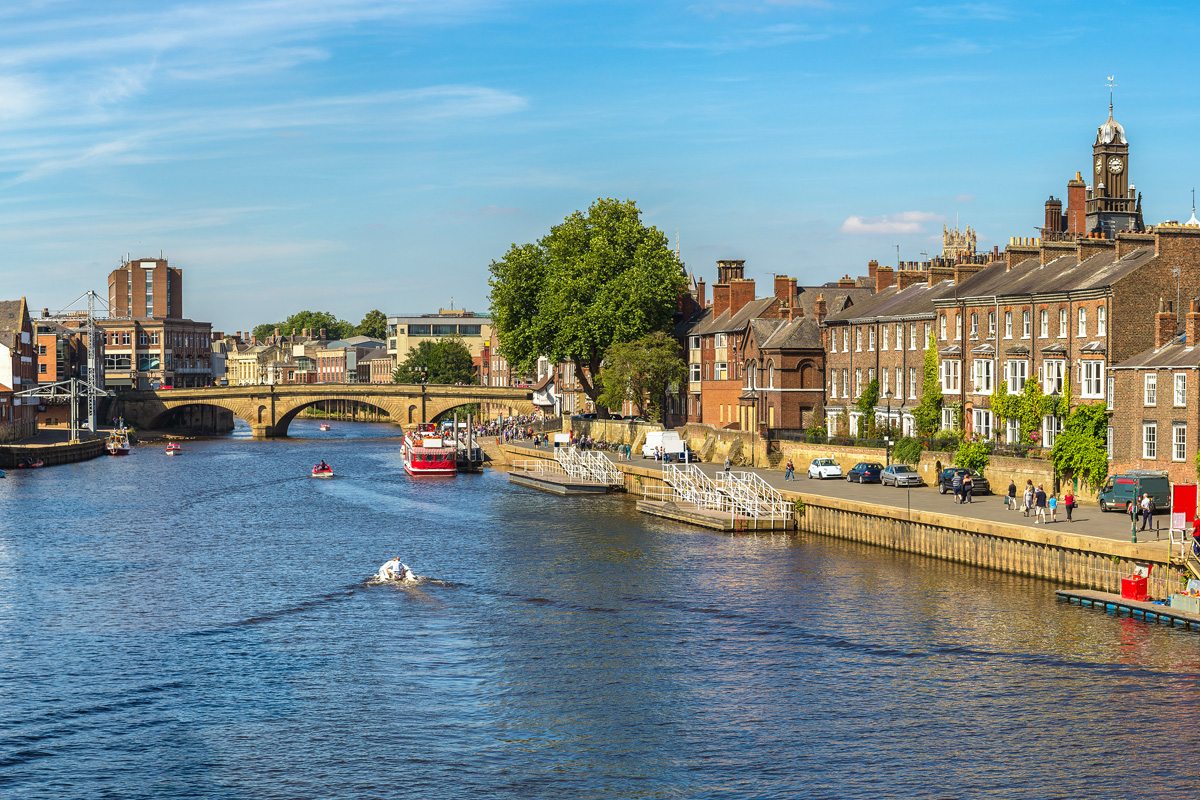- UK /
- York
Discover The Latest Property Statistics and Sold House Prices In York, North Yorkshire.
Gain a competitive edge in the York, North Yorkshire housing market using our extensive data on house prices with local insights and trends.
See more data for postcode districts in York:
Check other postcode districts data in North Yorkshire:

YORK
Property market data for York in North Yorkshire. Compare data on the district postcode areas of York including sold house price growth, long let gross rental yield, buyer demand, average asking price, average price per square foot and average rental prices. Explore York with a range of tools to help you understand the local market.
In the centre of York, YO1 long-let gross yield is 5.3%, the average rental price is £341 the average asking price is £334,376 and the average price per square foot is £425. There are currently N/A completed property sales per month, with a turnover of 6.0%. Toggle between postcode districts to see how different areas compare.
BUY-TO-LET PROPERTY INVESTMENT IN YORK
Understanding the Housing Market in York: Key Facts and Figures
Sitting at the confluence of the rivers Ous and Foss in North Yorkshire, York was founded as a city by the Romans in 71 AD, though it has a history, as a settlement, that may go back 10,000 years. During the Industrial Revolution, it became an important railway network hub and manufacturing centre, although manufacturing declined, as it did in many industrial towns, in the second half of the twentieth century. Today, York is worth around £5.2 billion to the UK's economy. Major employers include York City Council, Aviva, Network Rail, BT Group, CPP Group, the University of York and the York Hospitals NHS Trust. The economy is mainly underpinned by the service industry, which is responsible for nearly 90% of all employment. With 8,4 million tourists coming to York each year, the tourism industry is worth £765 million and supports over 24,000 jobs. Most visitors are drawn to the city's history, which is truly etched into its architecture. It is a walled city, with the walls a popular walk. York is full of what are known as Snickelways which are narrow, pedestrian routes that give York an entirely medieval feel, the most famous of which being The Shambles, which is lined with independent shops, boutiques and tea rooms. York Minster, a Gothic cathedral built in 637 AD, dominates the city. With museums, galleries, historic buildings and a wealth of interesting places to shop, eat and drink, there is plenty to do in York but for tourists, perhaps the biggest draw is just the opportunity to walk around the city and take it all in. But as well as history, York has a thriving cultural scene that includes a yearly programme of major events and festivals, a diverse music scene and plenty by way of visual arts and theatre. It is the UK's first UNESCO Creative City of Media Arts. In 2022, it is halfway through the York Cultural Strategy 2020-2025, named York's Creative Future, which is a programme for developing cultural infrastructure, engaging children and young people, developing and retaining talent and boosting the city's national and international profile and a city of culture. This is being achieved by bringing in funding from investors and institutions and by rethinking the city's approach. For instance, York is the first UK city to have an elected Culture Executive. The city centre, contained within the city walls, is a very compact city, with everything available within a 10-20 minute walk, and a large number of homes within listed, period buildings. There is, however, a decent range of property types on offer, from traditional terraced houses, townhouses and apartments to converted buildings. While plenty of residents live and rent within the city centre limits, tourism means there are a lot of holiday-lets here as well. There are, however, only about 10,000 people who live in the centre, with most of York's population living in suburbs, with more expensive areas to the south. Here, you will find more standard housing, from terraces to detached and semi-detached, family homes.